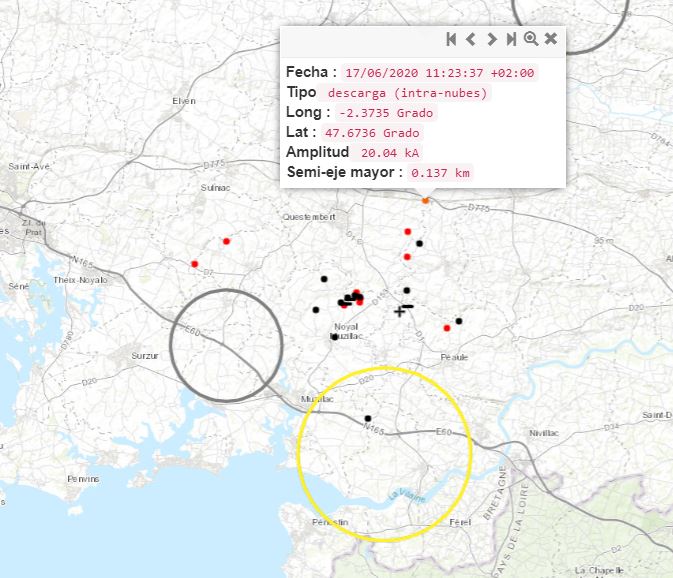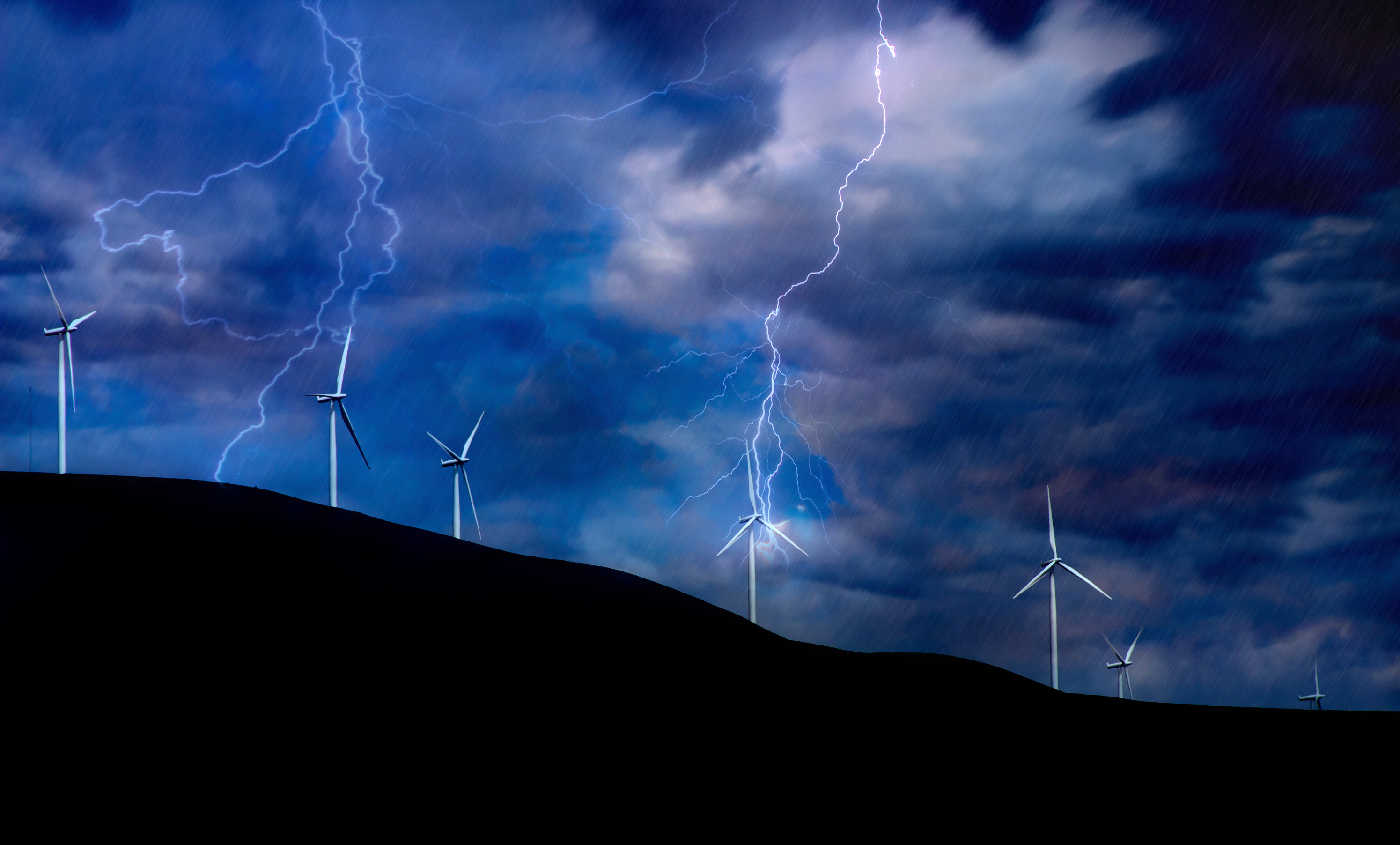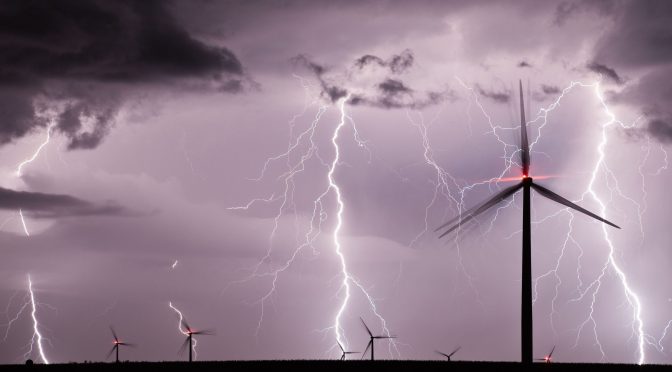2,000 lightning strikes occur on our planet every minute. An uncontrolled phenomenon, and the twenty-fifth cause of world death. The wind power sector is an economic activity especially sensitive to its attacks, due to the location of its parks and the idiosyncrasy of wind turbines. As an example, in Spanish territory last year there were 218 storm days with 2,773,636 lightning strikes, of which 303,845 cloud-ground. Anaïs Brocheriou, Head of Lightning Prevention Services at Tesicnor, discusses in this article how to protect wind farms from lightning.

The high season of storms and lightning, mainly from mid-June to October, is marked by the intensity of a phenomenon that seriously affects the activity of the wind energy sector and, lastly, and most seriously, the safety of workers. Due to the direct risks of electrocution, damage to wind turbines, reduction of production and indirect consequences of forest fires. It is estimated that between 4% and 16% of these claims originate from thunderstorms. Higher figure, considering that, in addition, 30% of fires are of unknown origin.

Resorting to weather forecasts as a source of basic information for economic decision-making poses a double problem. On the one hand, the imprecision, due to the wide lapse of time, being 24 hours in advance; and from another; due to the lack of specific predictions, which use networks to observe lightning activity in real time.
Only with a detection network developed year after year, carefully maintained, detecting, treating and storing all the lightning strike data that occurs on the planet, accurate information can be counted on. In this sense, Tesicnor can certify a detection efficiency of 98% and the location of an impact within 100 meters.
How are these lightning data applied to protect the wind farm sector?
Companies in the energy sector and specifically wind energy use it at two levels:
In real time: Allowing you to configure, with the control center and / or those responsible for wind farms, the time necessary to evacuate workers in the event of an electrical storm.
For this, an alert area is designed, a radius, which we are going to define according to this evacuation time, to which other parameters such as the size of the park, the type of machine, etc. can be added. Once it has been configured, when a storm approaches and the first lightning strike falls in the defined area, the control center and / or the wind farm managers are notified that the threat is directed to their work center.
This alert is accompanied by real-time visualization of the storm’s trajectory and lightning strikes, an essential factor for checkpoints to decide whether to implement their protocol in the event of storms and lightning.
Specific cases
It is important to note that each company that uses these services does so in a different way and if it operates in different areas of the globe, it also adapts to that geographical area. For example, in tropical countries, the only measure against the threat of lightning is to evacuate the wind farm.
In other parts of the world, for example, in Spain, customers can make the decision based on the type of activity they carry out and the distance of the storm from their wind farm. For example, if the storm is more than 50 kilometers away, it is possible to access a wind turbine, between 20-50 km there is the possibility of interrupting the entrance to the machine and within 20 km, proceed to the immediate evacuation.
Other clients, based on real-time visualization, determine when to reactivate the check in substations and decide whether or not it is time to send subcontract workers.
The lightning history also counts
A priori, it might seem that the only important thing in lightning is to know when and where it will happen, however, having a record of each past lightning strike, anywhere on the planet is very powerful information if you know how to use it. .
Thanks to this information, companies have the possibility to correlate machine incidents with lightning strikes. Also know which wind farms are more vulnerable to lightning strikes and need greater vigilance against this environmental risk.
And finally, in the event of an accident, these lightning history reports are valid supporting documents since the effectiveness of the technology used is endorsed by the World Meteorological Organization before the insurers, which speeds up the procedures with the insurance companies.
In conclusion, early warning services have the advantage that they do not require installation or maintenance and offer a range that adapts to different needs. Early alerts, real-time visualization of the evolution of the storm and historical verification, are mainly the most demanded services in wind power. Valuable and useful tools to optimize energy production, protect facilities, demonstrate claims to insurers and most importantly, protect the lives of workers.
For more information on this topic, access the Tesicnor website. Or you can directly contact Anaïs Brocheriou, head of Tesicnor’s Lightning Prevention Services at [email protected].


